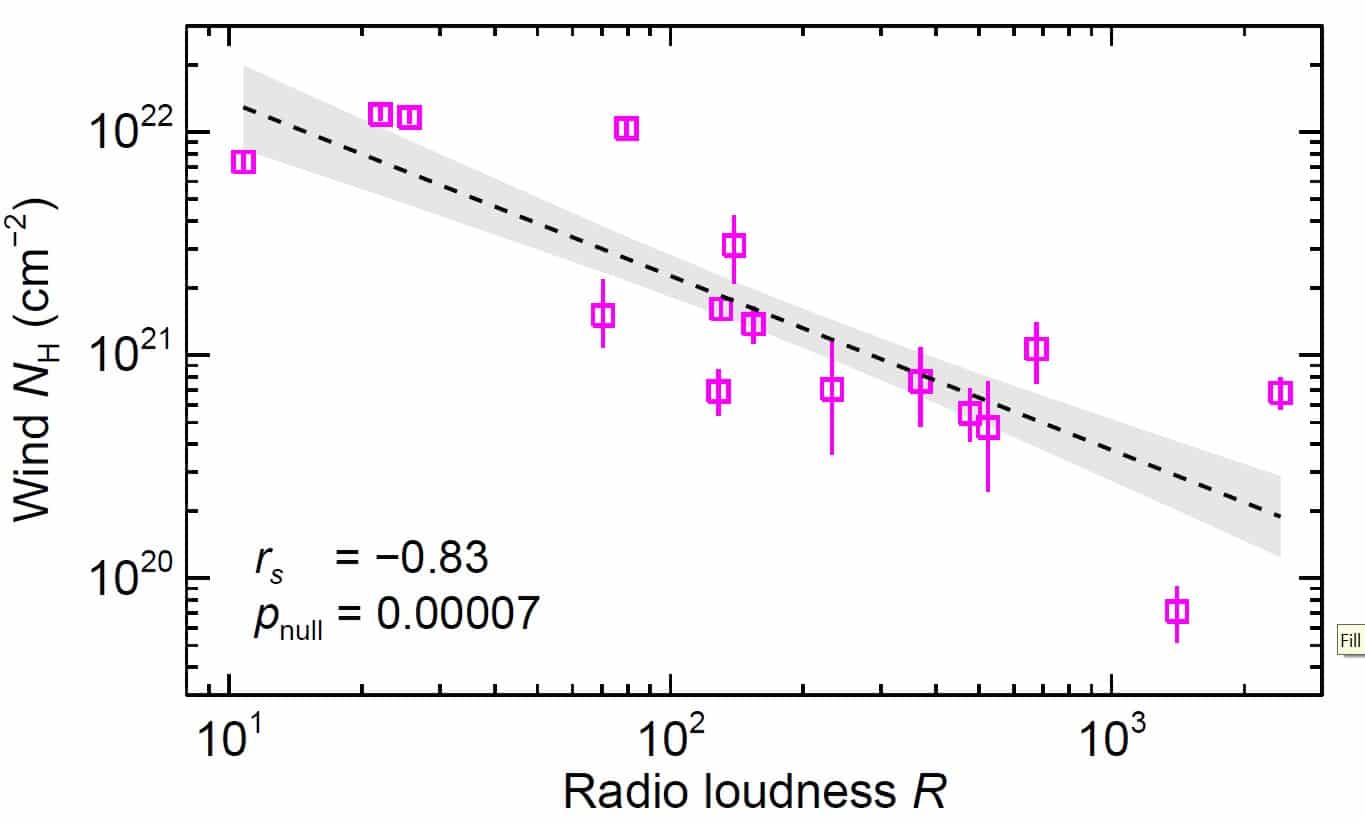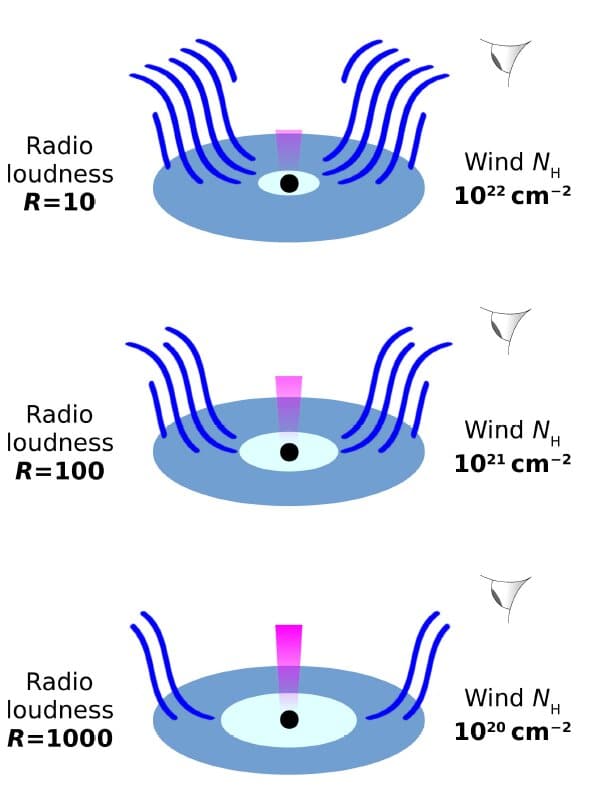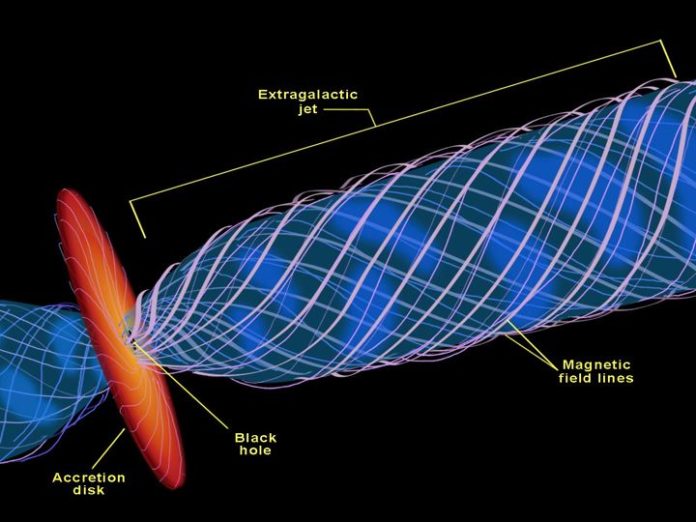Fundamental considerations of the energy supply in large-scale extragalactic radio sources(“radio galaxies”) led astronomers to predict that these sources should contain jets or beams that connect the nucleus of the parent galaxy to the large-scale radio lobes. But, how do these jets and winds originate in galaxy puzzled astronomers?
Now, SRON scientists have found a correlation between jets and winds, suggesting magnetic fields as a common cause.
Astronomers believe that supermassive black holes lie at the center of virtually all large galaxies, even our own Milky Way. Black holes seem to have a significant effect on the evolution of galaxies. Some black holes gobble up vast amounts of stardust and gas from their host galaxies. Those so-called active galactic nuclei (AGN) spit out some of the material that is falling onto them in the form of jets and winds.

In AGN, the magnetic field drives jets of relativistic particles in the opposite direction along the rotation axis of the black hole. SRON astronomers have now discovered a connection among jets and winds, proposing a typical driving mechanism.
There ends up being an opposite correlation between’s the radio emission from the jet and the amount of gas in the AGN’s wind along our viewable pathway. Contingent upon the spin of the black hole and the design of the magnetic field, the outflowing power jet is dispersed diversely to the jet and the wind. An all the strong jet implies a weaker wind and vice versa. The outcomes recommend that much the same as planes, winds are magnetically determined. Mehdipour and Costantini affirmed this by excluding other possible mechanisms for the observed correlation.
For the study, scientists used XMM-Newton observations to see how the wind alters the shape of the X-ray spectrum from the AGN along our line of sight. This helps them obtain the parameters of the wind, particularly the amount of gas in it along with our line of sight. They used radio measurements from the literature to calculate the power of the jets and modeled all data with the SPEX code—developed at SRON by Jelle Kaastra and his team.

SRON astronomers Missagh Mehdipour said, “For our investigation, AGN had to shine bright enough in X-rays and have a favorable inclination angle. This means we ended up with sixteen AGN in our sample. Although our discovered correlation is statistically significant with a probability of no correlation much smaller than 1 percent, a larger sample is desirable for a more general characterization. Future X-ray telescopes, in particular, Athena, will enable us to detect the wind in fainter AGN. This would increase the sample size and make our conclusion stronger.”
The study is published in Astronomy & Astrophysics.
